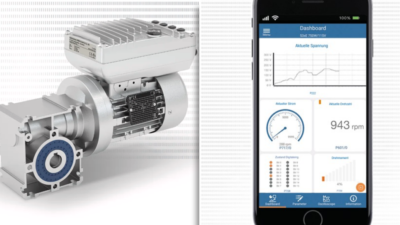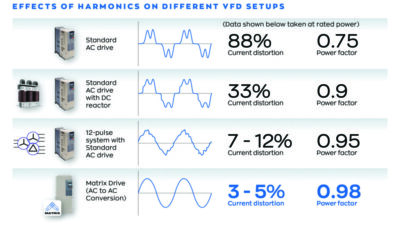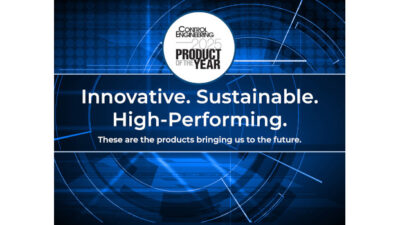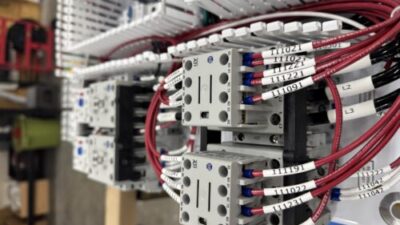Proper motor sizing precludes equipment failures, ensures efficiency and reduces maintenance issues.
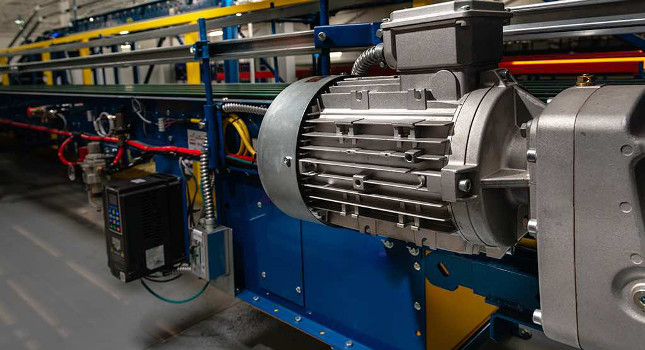
Electric motors are a primary means for furnishing motion on modern industrial machinery and equipment, but designers cannot bolt on the cheapest version that fits. Implemented properly, electric motors are a cost-effective and reliable method to create rotational motion, and they also can couple with gearboxes and other mechanisms to achieve varying levels and types of force. Motors that are not properly sized will be inefficient and can cause operational and maintenance problems.
Designers are, at times, overwhelmed by the wide variety of motor manufacturers, styles and sizes available. Typical motors may be ac or dc, for fixed or variable speed, with steppers and servos as options for high-precision applications. Each style has certain strengths, but all applications must be sized to operate the load under all normal conditions. The focus of this article is on basic ac motors (see Figure 1).
Knowing how to select the right size motor for a given application requires a methodical look at the requirements. For any machine builder or OEM, cost is always a key consideration. Beyond that, an evaluation of the environmental conditions, operational requirements and available power will lead users down the right path. This article reviews the basic considerations and steps for properly selecting and sizing electric motors.
Benefits of getting the right motor
Getting the motor size right is critical for any application. Properly sized motors operate the driven equipment most efficiently, which in turn causes the least wear and tear. When equipment is running correctly, machine uptime is maximized, and so is the return on investment in the motor and the driven equipment.
Energy efficiency is another big factor. Beginning in the 1990s, regulations have progressively required more motor types of 1.0 hp and above to deliver better efficiencies. Refined designs and construction methods using more copper allow these premium-efficiency motors to draw less current in operation. Initial costs are usually higher, typically more than offset by lower operating costs over the life of the motor.
Heat and installation issues are two main reasons for motor failure, so both conditions must be considered. Heat can originate from several sources and is most damaging to motor insulation systems. It can arise from outdoor installations, or it can be transmitted from associated process equipment.
Electric motors generate their own heat within the windings during operation, and mechanical friction at motor bearings is another source. Installation issues such as misalignment, improper cooling, incorrect motor type for the environment and vibration must be corrected. Properly sized motors will not experience problematic heat due to overloading, and excess heat can be mitigated by ensuring proper cooling with adequate available airflow.
Improper installation resulting in misalignment and or excess vibration will mechanically damage the motor, bearings and associated equipment over time. Motors must be correctly installed and sufficiently sized for the applied loading to minimize and to mitigate vibration issues and ensure long bearing life. Proper selection of motor mounting brackets can simplify installation and assist in accomplishing correct alignment.
Steps for motor sizing
The process for sizing motors for an application breaks down into three major steps:
- Investigating the load operating characteristics
- Considering the operational environment
- Planning for the available power supply.
Motor sizing steps should generally be performed in this order, but each factor relates to and affects the others. Properly accounting for these considerations and selecting a motor based on them results in selecting a motor that can carry out the work needed without having a shortened life due to premature winding, insulation or bearing damage.
A motor’s primary job is to continue spinning at a commanded speed regardless of the torque load so it can deliver the necessary amount of mechanical power. The motor must overcome the load’s inertia, or resistance to movement, to accelerate to the desired speed, and then maintain it. Not every motor load is the same, however.
Constant torque loads are the most straightforward applications. These are loads where the required torque does not vary much with the speed. This is common for conveyors, compressors and cranes (see Figure 2). The horsepower requirement does vary with speed or how much work is effectively being performed. For these constant torque applications, it is necessary to determine the load experienced by the motor in order to select the proper horsepower. This may be indicated on the nameplate of the driven machine, or from torque testing to determine the amount of required force. The minimum required horsepower is calculated using the formula:
Variable torque loads, where the required torque changes with speed, are more characteristic of equipment like pumps and fans. These loads should be sized to the highest or peak loading.
For any motor load, one must account for the fixed operational speed or the variable speed range at which the motor will run when connected to the equipment. Variable frequency drives for adjusting motor speed are a good option, especially since many loads will experience large decreases in energy usage if the motor can be run at a slower speed. For variable speed applications, the turndown ratio of the motor and equipment must be evaluated. This ratio is the maximum or nominal motor full speed divided by the lowest operating speed. A motor may lose the capability to cool itself if turned down too far. For motors that will use a variable frequency drive, ensure that the motor selected is a 3-phase inverter-duty-rated motor.
Duty cycle of the load defines how much time the motor must run and stop. The motor’s rated duty cycle must be better than that required by the load. Frequent starts are harder on a motor because they generate more heat. A motor with a duty cycle rating of less than 100% or continuous will be smaller and less expensive, but it must be operated with rest cycles to offload the heat buildup. In many applications, specifying a 100% duty cycle motor is prudent.
Consider the environment
Environmental considerations include the maximum and minimum ambient temperatures, normal and washdown moisture and contaminants such as dust and dirt. These will drive selection of the motor construction type. There are many configurations to meet various environments, and three popular styles for industrial applications are:
- Open drip-proof (ODP): Relatively open enclosure promotes cooling but requires an indoor, relatively clean and dry location; protected against falling water.
- Totally enclosed fan-cooled (TEFC): Enclosed but not completely air-tight enclosure, often with a ribbed frame to aid with cooling; provided with an external fan; versatile motor for most locations.
- Totally enclosed blower-cooled (TEBC): Like TEFC, but is provided with a separately driven external blower to keep the motor cool even when operating at low speeds where an integrated fan would be ineffective.
Best practice is to choose the motor able to withstand the operating environment with the best cooling performance. This will increase uptime, extend operational life and reduce required maintenance.
Plan for available power supply
The available power supply and preferred motor controls also play a role in sizing the motors for an application. For ac motors, users will need to select a single-phase or a 3-phase motor based on what is available at the facility. Generally speaking, 3-phase power is better suited for machine and process applications. Also, the higher the operating voltage, the lower the electrical current needed for the same load, and lower current uses thinner conductors and generates less heat. Common electrical connections for industrial ac motors are 120 V c single‑phase, 230 Vac single‑phase and 240/480 Vac 3‑phase.
Selecting the operating voltage often comes down to using what is commonly available at a given location. But where there is a choice, a higher operating voltage improves motor longevity. This is particularly important in smaller motors where the mass, fan construction and insulation systems may not adequately offload heat. A 3-phase motor is more easily reversed than a single-phase motor and is thus preferred for applications requiring forward and reverse operation.
Typical applications
Following are typical applications and corresponding suitable motor sizing choices:
- Single-phase or 3-phase ODP motors:
Typical uses include machine tools, conveyors, packaging machines, batching machines, food and beverage equipment, pumps, fans and air compressors. - 3-phase TEFC motors:
Typical applications are the same as for ODB motors, but these should be used where wet or dirty conditions are encountered. - NEMA premium efficiency inverter duty TEBC motors:
Typical uses include gear reducers, pumps, machine tools and other direct-coupled equipment installed in damp, dusty or dirty environments where long life and ultra-high efficiency is required. - Jet pump motors (these motors have special seals, shaft material and designs):
Typical uses include jet pumps, well pumps and other liquid pumping applications.
Successful motor sizing strikes a balance
Following the steps presented in this article will ensure a motor will be sized for all load conditions, able to survive the environment and functionally match the available power. There are often multiple sizing and other options for a motor application, and a successful design will strike the best balance among these options while minimizing initial and operational costs.
